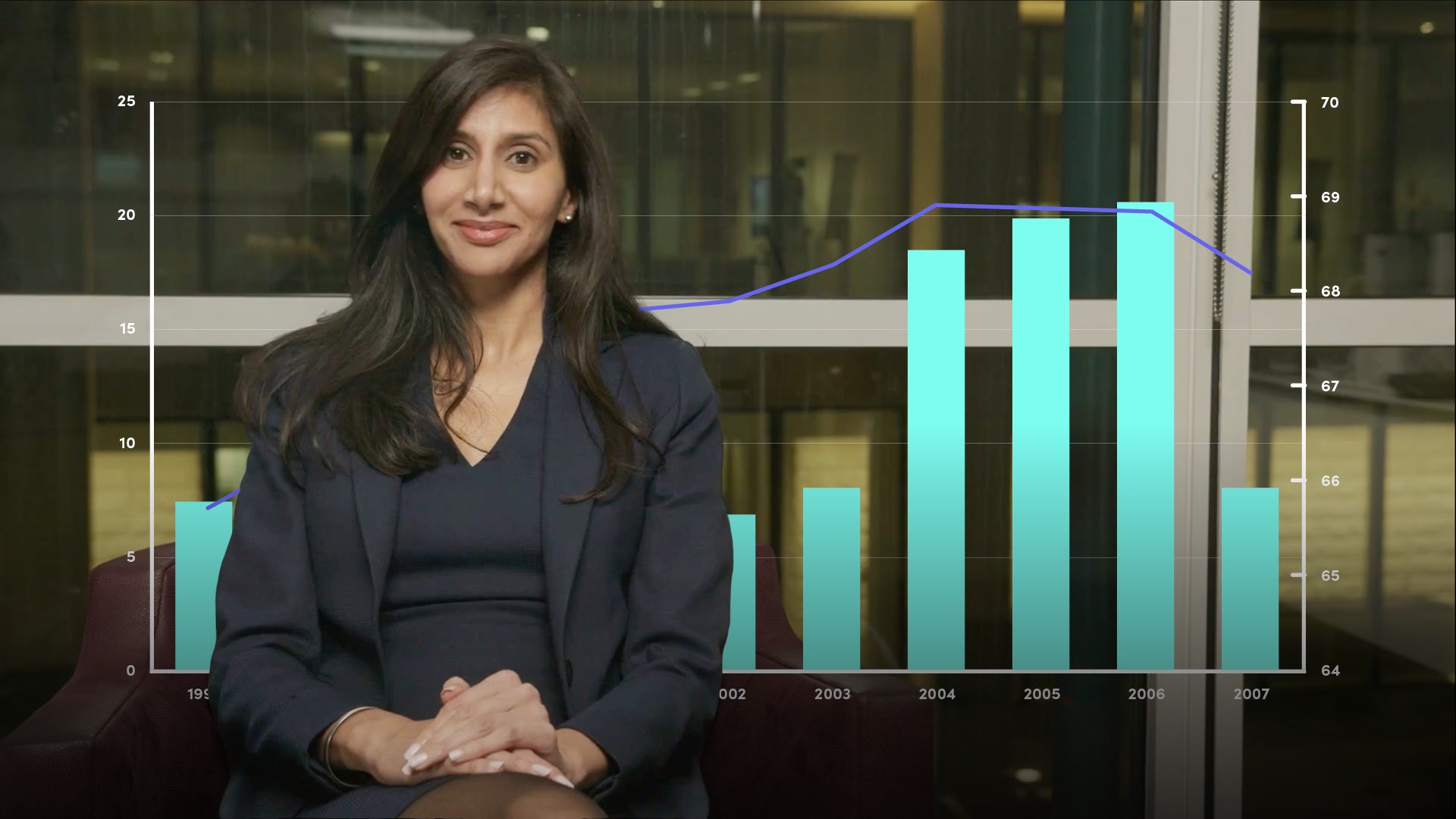
History of the Basel Accord

Sukhy Kaur
15 years: Debt capital markets
In the aftermath of the global financial crisis, there was an unprecedented overhaul of the global framework regulating the banking system. Sukhy explains this regulatory framework and discusses the strengths and weaknesses of Basel I and II that ultimately led to the current version - Basel III.
In the aftermath of the global financial crisis, there was an unprecedented overhaul of the global framework regulating the banking system. Sukhy explains this regulatory framework and discusses the strengths and weaknesses of Basel I and II that ultimately led to the current version - Basel III.
Subscribe to watch
Access this and all of the content on our platform by signing up for a 7-day free trial.

History of the Basel Accord
15 mins 54 secs
Key learning objectives:
Understand the background and need for the Basel Committee
Define the earlier versions of the Basel Accord and how Basel has progressed its measures
Overview:
The Basel Committee is responsible for setting a global standard for banks to follow. Their regulations require banks to maintain certain ratios or amounts of capital in order to ensure that the world economy is not at risk of a crisis.
Subscribe to watch
Access this and all of the content on our platform by signing up for a 7-day free trial.
Who and what is Basel?
In June of 1974 a small privately owned bank called Herstatt Bank was put into liquidation by the German regulators. This was a result of very large trades which the Bank had undertaken in the foreign exchange market which did not go their way. Bank counterparties releasing Deutsche Marks to Herstatt for delivery of US dollars in New York time never received their funds essentially because of time differences -Herstatt’s licence was revoked after it closed for business in Germany, but while the US was still in morning trading.
This was a very significant milestone in banking history as it brought to the forefront the ripple effect of such foreign exchange activity on other banking institutions. FX settlement risk became known as Herstatt risk. It highlighted the necessity to create a central forum for banking supervisory matters.
The chaos of Herstatt’s collapse led to the formation of the Committee on Banking Regulations and Supervisory Practices, in 1974. It was later renamed the Basel Committee on Banking Supervision. Initially it only consisted of the G10 countries and its main objective was to enhance the financial stability and quality of banking supervision and avoid such risks in the future.
Why did we need Basel I?
The banking industry was in dire need of a clear framework to provide some order and stability to the global banking system. The Basel Committee met in 1987 to issue guidelines relating to capital and in particular to a weighted approach to risk management. From this, the Basel Capital Accord - now referred to as Basel I - was released to banks in July 1988.
It marked the first time a bank was required to weigh the capital it held against the credit risk it took. Bank assets were classified into five categories of risk-weighting. These ranged from 0% for high-quality assets such as cash and certain government debt from countries that were either full members of the OECD or those with special lending arrangements with the IMF, to 100% assigned to lower-quality private sector debt. These are more broadly known as risk-weighted assets or RWAs for short. Banks were required to hold a minimum level of capital against the total amount of RWAs they had, and this level was set at 8%. For example, if a bank had RWAs of £200m, it would be required to maintain total capital of at least £16m.
This ratio was made up of two layers of capital, Tier 1 being the higher loss-absorbing capital such as equity and retained earnings, and supplementary capital called Tier 2. 50% of total capital was to be in Tier 1 format. So, in the earlier example, if the total capital requirement was £16m, then £8m of this would have to be in Tier 1 format, and the remaining £8m in Tier 2 format. This capital requirement was to be implemented by 1992, not only in its member G10 countries but also in countries where these banks had a material international presence.
What is Basel II?
Basel II provided a much more comprehensive approach to the definition of risk. It consisted of the following three main pillars.
- Minimum Capital Requirements:
- The first pillar refined the definition of risk set out in the Basel I Accord. In particular it focused on the calculation of Operational, Market and Credit Risk. It essentially offered banks three methods for calculating the amount of capital required that was more aligned to the asset’s risk profile.
- Supervisory Review:
- This provided clear guidelines for both national supervisory authorities and for the banks themselves to undertake periodic capital assessments. It also gave supervisory authorities the power to intervene should the capital requirements come under pressure.
- Market Discipline:
- This made a requirement for banks to make effective use of disclosure with respect to their risk exposures and any relevant market information. This encouraged market discipline such that the users of financial information could make much more informed decisions.
Why wasn’t Basel II perfect?
By 2007, banks had become grossly over-leveraged, having taken full advantage of easy monetary conditions post-9/11 and most famously, the booming market in “subprime” mortgage lending. Subprime relates to lending to those with lower credit profiles. Thus, subprime related investment products were attractive yielding higher returns. However, when the tide turned on the subprime market, losses relating to these products soared.
How did Basel III exceed Basel II?
The Basel Committee responded to the financial crisis with various reforms relating to the management of liquidity risk as well as higher minimum capital and leverage requirements. These reforms were packaged as the Basel III proposals and were first published in December 2010 with further revisions in 2011. These amendments were needed to address the limitations that were clearly evident, particularly in relation to the leverage and liquidity aspects in the system.
Basel III sought to strengthen the standard on five key areas, with the various aspects fully phased in between the years of 2013-2019.
- Minimum Capital Requirements
- It raised the amount of Common Equity capital (the highest quality of capital) a bank must hold from 2% to 4.5% and Tier 1 Capital from 4% to 6%.
- Capital Buffer Requirements
- In order to actively manage a bank’s regulatory capital base, Basel III introduced two new capital buffers which could only be met with Common Equity capital.
- Leverage Ratio
- The financial crisis clearly demonstrated the damage of overleverage in the system, particularly for banks with large balance sheets.
- Liquidity Coverage Ratio
- Ensured banks had enough high quality liquid assets to cover funding needs over a 30 day period. A Longer term ratio known as the Net Stable Funding Ratio or NSFR ensured banks are also resilient over a broader time horizon.
- Bucketing System
- Basel III grouped banks into buckets according to their size, complexity and systemic importance to the overall economy.
In 2014, the Basel Committee together with the Financial Stability Board introduced a separate Total Loss Absorbing Capital requirement, known as “TLAC” which was only for these systemic banks.
TLAC eligible instruments broadly consist of all subordinated capital and senior unsecured instruments with a remaining maturity of >1 year and which are structurally subordinated.
Subscribe to watch
Access this and all of the content on our platform by signing up for a 7-day free trial.

Sukhy Kaur
There are no available Videos from "Sukhy Kaur"



























